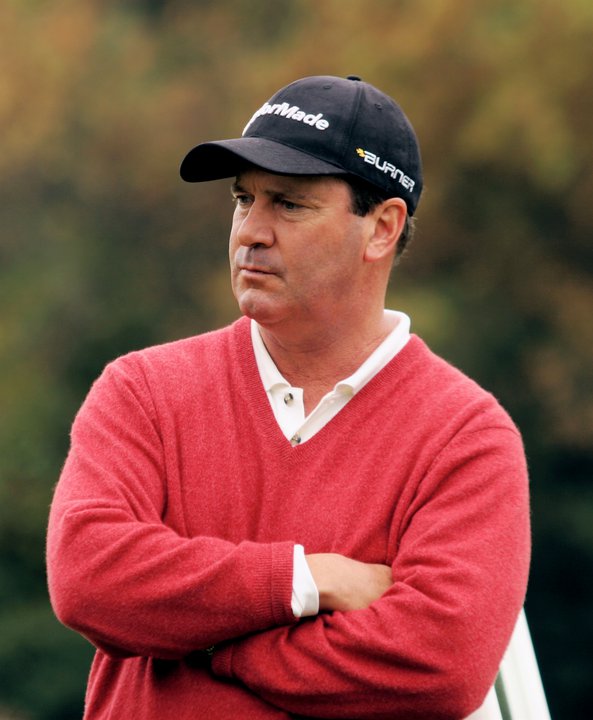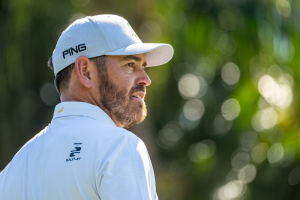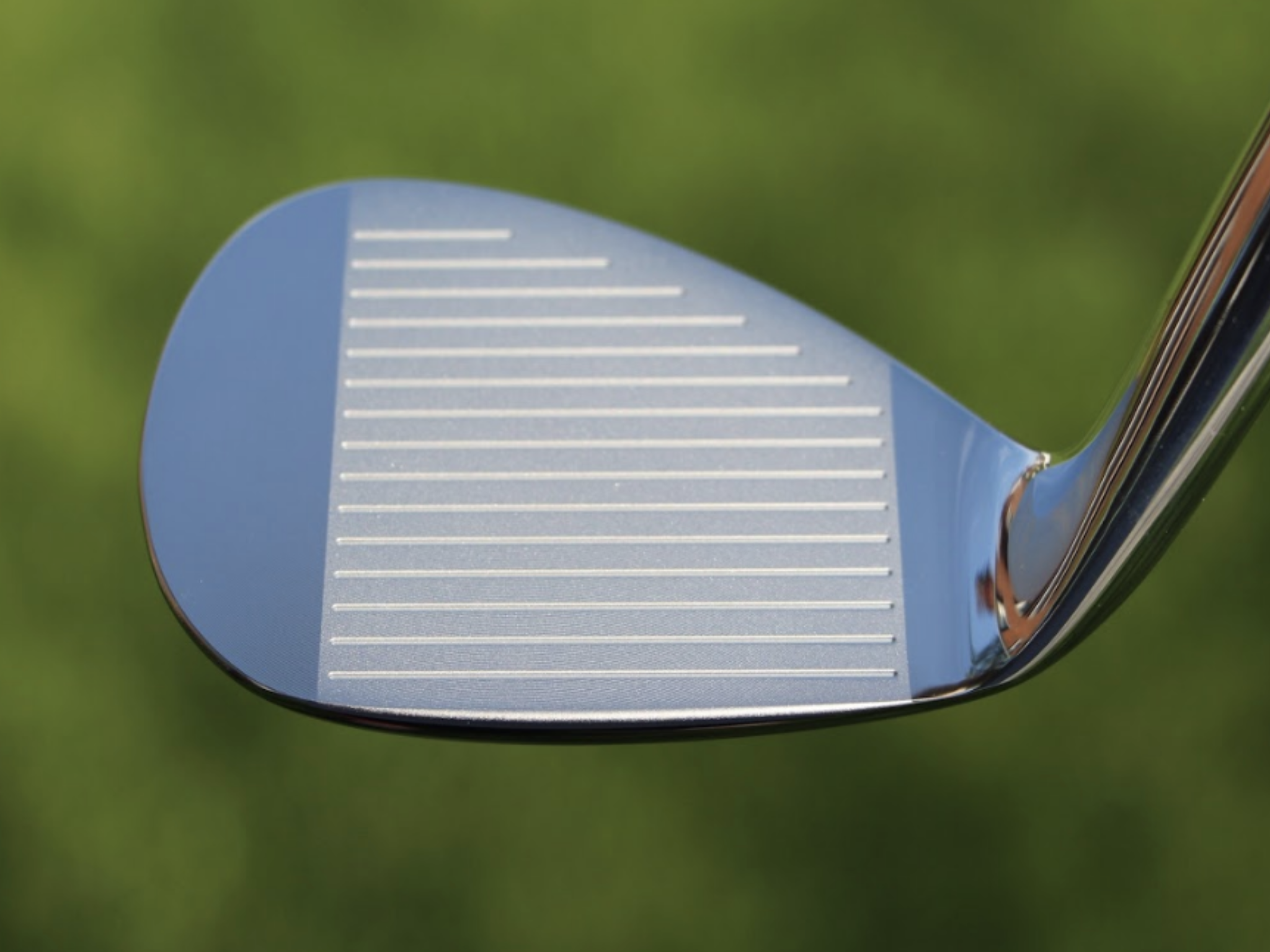Opinion & Analysis
DeFrancesco: My beef with Brandel, and why I criticize TV announcers

After reading through the GolfWRX forum thread “Brandel Chamblee Says Some Idiotic Things” (http://www.golfwrx.com/forums/topic/815743-brandel-chamblee-says-idiotic-things-ongoing-thread/ ) and seeing my name come up multiple times I thought I might take a moment to explain why I take the time to challenge Chamblee in video commentary available on my website. It is important to note that, at least in my mind, I did not pick this fight; rather, Chamblee instigated it when he singled out “modern instruction” (the “cookie-cutter, scientific approach to teaching”) as a “cancer” on the game.
In a 2010 interview (http://www.golf.com/tour-and-news/golf-magazine-interview-brandel-chamblee?page=2), Chamblee had this response to being asked what he meant by ‘cancer on the game’:
“…the golf swing is art, but it is taught as a science. That’s a confining way to learn the game, and it is bad both for players who learn that way — I go back to swings like Scott, Donald and Howell — and for golf in general. When you learn the swing by watching and obsessing over videotape you become fixated on your flaws, on perfection.”
Well, I happen to use video all the time when I teach. In fact, I will use almost any means I can think of to help people play a game that is truthfully too difficult for the average player to attain any semblance of mastery. I take Chamblee’s overreaching statements as an attack on who I am and what I do (as well as just about everyone who tries to make a living teaching golf), and when I am challenged I will fight back with arguments backed up by visual evidence. Fortunately, I have a YouTube channel, GolfWRX column and a website that give me an opportunity to voice my opinions, and while not reaching anywhere near the amount of people that a commentator of Chamblee’s status does, I still have a voice that gets heard.
Let me offer a short list of what I consider the major issues here, and then talk about them in more detail.
- Chamblee (as well as all the other commentators/analysts on the Golf Channel and the major networks) has the bully pulpit. He is constantly on screen and is viewed by hundreds of thousands of people daily. What he says matters, as many (not all, of course) take both the subjective and technical information they get from the Golf Channel and use it to form their own opinions and apply it to their own golf swings.
- Chamblee has an extremely negative opinion of teaching pros that use technology to help their students. This “technology” includes video, launch monitors, 3D Motion Analysis and any other methods he considers “scientific.”
- He has repeatedly attacked Tiger Woods’ decision making regarding the management of his golf game, in spite of the fact that Tiger has amassed the greatest record of any golfer in history other than Jack Nicklaus.
It is only recently that television announcers on golf broadcasts have been held accountable for the things they say. For example, if they have it in their minds that lowering (or “dipping,” as they like to call it) during a golf swing is a bad thing, they point out the presence of lowering every time a player hits a bad shot. In my extensive study of the golf swing, and that would include the swings of the greats (past and present), plus the swings of all my students, most of whom are not great and make up every possible level of player in existence, I have found that most great ball strikers have lowered significantly by the time they hit the golf ball. Some lower in the backswing and then again in the forward swing (Hogan and Woods). Some lower only in the forward swing (Nicklaus and Nelson). Some lower only in the backswing (Els, Lema), but you have to really look hard to find anyone who stays at the same height throughout the swing.
This is a perfect example of how “conventional wisdom” is perpetuated in spite of copious evidence to the contrary. If the announcers did their homework, I wouldn’t have anything to complain about. My job is to help the people who come to me for lessons. They are usually fairly serious golfers (they have to be somewhat serious as lessons aren’t cheap) and they watch golf on television.
I know they are listening because I field their questions every day, and the information they pick up on golf telecasts comes up in our lessons. I find myself explaining regularly how the things they hear on television are highly questionable, and when I hear it and see it myself I can now, through the miracle of DVR, save it and then spend some time analyzing just what was being said. With side by side video, I can show clearly that what is being said is many times simply wrong, which helps me to dispel some of the myths that populate the game.
I am not trying to come off as a know-it- all or as some kind of golf swing genius. Rather, I have a genuine belief that people deserve to know what actually happens in a swing as opposed to the tired old adages that masquerade as “fundamentals,” and I have received tons of comments thanking me for the detailed explanations I provide, especially the ones that free people up to make a more athletic swing at the ball. Thus, I find it exciting to be able to show beyond a shadow of a doubt that good players don’t “stay level” and “maintain their posture,” and that the good ball strikers never swing “down the line,” even though they may “feel” and state that they do exactly that.
It is beyond me that the Golf Channel, which serves up golf instruction as a major component of its programming, would have on staff someone with a publicly avowed distaste for “modern instruction,” the type of instruction on display every day when you tune in to watch. I have always encouraged teachers to play competitively and to do everything they can to maintain and improve their own golf games, but Chamblee longs for the days when ex-Tour players were the teachers, imparting their knowledge based entirely on experience, focusing on feel and instinct rather than technique. Only someone who has never held a teaching position could have such an opinion.
If Chamblee spent a week doing what I do (giving 40 hours of lessons mostly to people who struggle to make solid contact), he would certainly change his tune. He would know for a fact that people can’t take a suggestion and put it into action without any and every type of aid possible. The better technology gets, the more tools teachers have to try to help their students. I would agree that there are cases where teachers overindulge in the use of machines and swing aids, and fail to use basic hands-on methods, but for a teaching pro to avoid using at least some of the available tools is to guarantee that he or she is not going to give the student everything they should be getting from a lesson.
I have no idea how teachers function without video. Impact is impossible to see without the ability to slow it down and study it, and a lesson becomes guesswork when this crucial component is left out. If Chamblee is going to call what I do to help my students a “cancer on the game,” then you had better believe I am going to fight back with an argument that refutes his misguided opinions.
Lastly, when it comes to Tiger Woods, I just don’t see how someone can question the way Tiger has managed his game. Players change things around all the time. Tiger is the only one scrutinized and questioned, which is, of course, ludicrous, as his record dwarfs any player currently competing. Chamblee’s arguments regarding Tiger’s various changes are also ridiculous. It’s Tiger’s game to do with as he pleases, and he continues to win. Even though he hasn’t won a major since 2008, he’s still won 79 PGA Tour events, 40 European Tour events, 17 World Golf Championship events, three U.S. Amateurs, and three U.S. Junior Amateur Championships. His record is mind-boggling.
What Brandel doesn’t understand is that with all the tools available today, the golf teacher is more like the NASCAR mechanic. He works on the car: he doesn’t tell the driver how to drive. When the mechanics are good and the player plays his own game, good things happen. Tiger understands this. Chamblee does not.
I often draw my own critics who question my credentials as a player and teacher, and the GolfWRX thread is no exception. I have played in six majors and three senior majors. I was a first team All-American in college, and although I never made the Tour, I did have a nice career as a club professional, winning three State Opens and the National Club Pro Championship in 2001.
As a teacher, I have made the Golf Digest Top 50 and Golf Magazine’s Top 100 lists, and have worked with thousands of players, from beginners to Tour professionals. That’s why I feel that I am uniquely qualified to question Chamblee’s and other announcer’s pronouncements regarding golf swing technique and other golf related subjects, especially when I can back up any and all of my statements with very specific and detailed evidence using video.
When I do a controversial or critical video it is not just for effect. I choose to highlight what I consider to be gross negligence on the part of the announcers. Mostly, these videos have to do with swing technique, and if I make a statement that is contrary to what is being stated on the air I always back up my assertions with video of top players past and present. I think that it is important for the public to get proper information regarding swing technique, and I will continue to be vigilant in keeping the announcers on their toes.
- LIKE25
- LEGIT2
- WOW2
- LOL0
- IDHT0
- FLOP1
- OB0
- SHANK1
19th Hole
Vincenzi’s 2024 Zurich Classic of New Orleans betting preview

The PGA TOUR heads to New Orleans to play the 2023 Zurich Classic of New Orleans. In a welcome change from the usual stroke play, the Zurich Classic is a team event. On Thursday and Saturday, the teams play best ball, and on Friday and Sunday the teams play alternate shot.
TPC Louisiana is a par 72 that measures 7,425 yards. The course features some short par 4s and plenty of water and bunkers, which makes for a lot of exciting risk/reward scenarios for competitors. Pete Dye designed the course in 2004 specifically for the Zurich Classic, although the event didn’t make its debut until 2007 because of Hurricane Katrina.
Coming off of the Masters and a signature event in consecutive weeks, the field this week is a step down, and understandably so. Many of the world’s top players will be using this time to rest after a busy stretch.
However, there are some interesting teams this season with some stars making surprise appearances in the team event. Some notable teams include Patrick Cantlay and Xander Schauffele, Rory McIlroy and Shane Lowry, Collin Morikawa and Kurt Kitayama, Will Zalatoris and Sahith Theegala as well as a few Canadian teams, Nick Taylor and Adam Hadwin and Taylor Pendrith and Corey Conners.
Past Winners at TPC Louisiana
- 2023: Riley/Hardy (-30)
- 2022: Cantlay/Schauffele (-29)
- 2021: Leishman/Smith (-20)
- 2019: Palmer/Rahm (-26)
- 2018: Horschel/Piercy (-22)
- 2017: Blixt/Smith (-27)
2024 Zurich Classic of New Orleans Picks
Tom Hoge/Maverick McNealy +2500 (DraftKings)
Tom Hoge is coming off of a solid T18 finish at the RBC Heritage and finished T13 at last year’s Zurich Classic alongside Harris English.
This season, Hoge is having one of his best years on Tour in terms of Strokes Gained: Approach. In his last 24 rounds, the only player to top him on the category is Scottie Scheffler. Hoge has been solid on Pete Dye designs, ranking 28th in the field over his past 36 rounds.
McNealy is also having a solid season. He’s finished T6 at the Waste Management Phoenix Open and T9 at the PLAYERS Championship. He recently started working with world renowned swing coach, Butch Harmon, and its seemingly paid dividends in 2024.
Keith Mitchell/Joel Dahmen +4000 (DraftKings)
Keith Mitchell is having a fantastic season, finishing in the top-20 of five of his past seven starts on Tour. Most recently, Mitchell finished T14 at the Valero Texas Open and gained a whopping 6.0 strokes off the tee. He finished 6th at last year’s Zurich Classic.
Joel Dahmen is having a resurgent year and has been dialed in with his irons. He also has a T11 finish at the PLAYERS Championship at TPC Sawgrass which is another Pete Dye track. With Mitchell’s length and Dahmen’s ability to put it close with his short irons, the Mitchell/Dahmen combination will be dangerous this week.
Taylor Moore/Matt NeSmith +6500 (DraftKings)
Taylor Moore has quickly developed into one of the more consistent players on Tour. He’s finished in the top-20 in three of his past four starts, including a very impressive showing at The Masters, finishing T20. He’s also finished T4 at this event in consecutive seasons alongside Matt NeSmith.
NeSmith isn’t having a great 2024, but has seemed to elevate his game in this format. He finished T26 at Pete Dye’s TPC Sawgrass, which gives the 30-year-old something to build off of. NeSmith is also a great putter on Bermudagrass, which could help elevate Moore’s ball striking prowess.
- LIKE8
- LEGIT3
- WOW1
- LOL1
- IDHT0
- FLOP3
- OB1
- SHANK2
19th Hole
Vincenzi’s 2024 LIV Adelaide betting preview: Cam Smith ready for big week down under

After having four of the top twelve players on the leaderboard at The Masters, LIV Golf is set for their fifth event of the season: LIV Adelaide.
For both LIV fans and golf fans in Australia, LIV Adelaide is one of the most anticipated events of the year. With 35,000 people expected to attend each day of the tournament, the Grange Golf Club will be crawling with fans who are passionate about the sport of golf. The 12th hole, better known as “the watering hole”, is sure to have the rowdiest of the fans cheering after a long day of drinking some Leishman Lager.
The Grange Golf Club is a par-72 that measures 6,946 yards. The course features minimal resistance, as golfers went extremely low last season. In 2023, Talor Gooch shot consecutive rounds of 62 on Thursday and Friday, giving himself a gigantic cushion heading into championship Sunday. Things got tight for a while, but in the end, the Oklahoma State product was able to hold off The Crushers’ Anirban Lahiri for a three-shot victory.
The Four Aces won the team competition with the Range Goats finishing second.
*All Images Courtesy of LIV Golf*
Past Winners at LIV Adelaide
- 2023: Talor Gooch (-19)
Stat Leaders Through LIV Miami
Green in Regulation
- Richard Bland
- Jon Rahm
- Paul Casey
Fairways Hit
- Abraham Ancer
- Graeme McDowell
- Henrik Stenson
Driving Distance
- Bryson DeChambeau
- Joaquin Niemann
- Dean Burmester
Putting
- Cameron Smith
- Louis Oosthuizen
- Matt Jones
2024 LIV Adelaide Picks
Cameron Smith +1400 (DraftKings)
When I pulled up the odds for LIV Adelaide, I was more than a little surprised to see multiple golfers listed ahead of Cameron Smith on the betting board. A few starts ago, Cam finished runner-up at LIV Hong Kong, which is a golf course that absolutely suits his eye. Augusta National in another course that Smith could roll out of bed and finish in the top-ten at, and he did so two weeks ago at The Masters, finishing T6.
At Augusta, he gained strokes on the field on approach, off the tee (slightly), and of course, around the green and putting. Smith able to get in the mix at a major championship despite coming into the week feeling under the weather tells me that his game is once again rounding into form.
The Grange Golf Club is another course that undoubtedly suits the Australian. Smith is obviously incredibly comfortable playing in front of the Aussie faithful and has won three Australian PGA Championship’s. The course is very short and will allow Smith to play conservative off the tee, mitigating his most glaring weakness. With birdies available all over the golf course, there’s a chance the event turns into a putting contest, and there’s no one on the planet I’d rather have in one of those than Cam Smith.

Louis Oosthuizen +2200 (DraftKings)
Louis Oosthuizen has simply been one of the best players on LIV in the 2024 seas0n. The South African has finished in the top-10 on the LIV leaderboard in three of his five starts, with his best coming in Jeddah, where he finished T2. Perhaps more impressively, Oosthuizen finished T7 at LIV Miami, which took place at Doral’s “Blue Monster”, an absolutely massive golf course. Given that Louis is on the shorter side in terms of distance off the tee, his ability to play well in Miami shows how dialed he is with the irons this season.
In addition to the LIV finishes, Oosthuizen won back-to-back starts on the DP World Tour in December at the Alfred Dunhill Championship and the Mauritus Open. He also finished runner-up at the end of February in the International Series Oman. The 41-year-old has been one of the most consistent performers of 2024, regardless of tour.
For the season, Louis ranks 4th on LIV in birdies made, T9 in fairways hit and first in putting. He ranks 32nd in driving distance, but that won’t be an issue at this short course. Last season, he finished T11 at the event, but was in decent position going into the final round but fell back after shooting 70 while the rest of the field went low. This season, Oosthuizen comes into the event in peak form, and the course should be a perfect fit for his smooth swing and hot putter this week.

- LIKE12
- LEGIT3
- WOW1
- LOL1
- IDHT0
- FLOP1
- OB1
- SHANK1
Opinion & Analysis
The Wedge Guy: What really makes a wedge work? Part 1

Of all the clubs in our bags, wedges are almost always the simplest in construction and, therefore, the easiest to analyze what might make one work differently from another if you know what to look for.
Wedges are a lot less mysterious than drivers, of course, as the major brands are working with a lot of “pixie dust” inside these modern marvels. That’s carrying over more to irons now, with so many new models featuring internal multi-material technologies, and almost all of them having a “badge” or insert in the back to allow more complex graphics while hiding the actual distribution of mass.
But when it comes to wedges, most on the market today are still single pieces of molded steel, either cast or forged into that shape. So, if you look closely at where the mass is distributed, it’s pretty clear how that wedge is going to perform.
To start, because of their wider soles, the majority of the mass of almost any wedge is along the bottom third of the clubhead. So, the best wedge shots are always those hit between the 2nd and 5th grooves so that more mass is directly behind that impact. Elite tour professionals practice incessantly to learn to do that consistently, wearing out a spot about the size of a penny right there. If impact moves higher than that, the face is dramatically thinner, so smash factor is compromised significantly, which reduces the overall distance the ball will fly.
Every one of us, tour players included, knows that maddening shot that we feel a bit high on the face and it doesn’t go anywhere, it’s not your fault.
If your wedges show a wear pattern the size of a silver dollar, and centered above the 3rd or 4th groove, you are not getting anywhere near the same performance from shot to shot. Robot testing proves impact even two to three grooves higher in the face can cause distance loss of up to 35 to 55 feet with modern ‘tour design’ wedges.
In addition, as impact moves above the center of mass, the golf club principle of gear effect causes the ball to fly higher with less spin. Think of modern drivers for a minute. The “holy grail” of driving is high launch and low spin, and the driver engineers are pulling out all stops to get the mass as low in the clubhead as possible to optimize this combination.
Where is all the mass in your wedges? Low. So, disregarding the higher lofts, wedges “want” to launch the ball high with low spin – exactly the opposite of what good wedge play requires penetrating ball flight with high spin.
While almost all major brand wedges have begun putting a tiny bit more thickness in the top portion of the clubhead, conventional and modern ‘tour design’ wedges perform pretty much like they always have. Elite players learn to hit those crisp, spinny penetrating wedge shots by spending lots of practice time learning to consistently make contact low in the face.
So, what about grooves and face texture?
Grooves on any club can only do so much, and no one has any material advantage here. The USGA tightly defines what we manufacturers can do with grooves and face texture, and modern manufacturing techniques allow all of us to push those limits ever closer. And we all do. End of story.
Then there’s the topic of bounce and grinds, the most complex and confusing part of the wedge formula. Many top brands offer a complex array of sole configurations, all of them admittedly specialized to a particular kind of lie or turf conditions, and/or a particular divot pattern.
But if you don’t play the same turf all the time, and make the same size divot on every swing, how would you ever figure this out?
The only way is to take any wedge you are considering and play it a few rounds, hitting all the shots you face and observing the results. There’s simply no other way.
So, hopefully this will inspire a lively conversation in our comments section, and I’ll chime in to answer any questions you might have.
And next week, I’ll dive into the rest of the wedge formula. Yes, shafts, grips and specifications are essential, too.
- LIKE34
- LEGIT7
- WOW1
- LOL1
- IDHT2
- FLOP3
- OB1
- SHANK3
-

 19th Hole2 weeks ago
19th Hole2 weeks agoDave Portnoy places monstrous outright bet for the 2024 Masters
-

 19th Hole3 days ago
19th Hole3 days agoJustin Thomas on the equipment choice of Scottie Scheffler that he thinks is ‘weird’
-

 19th Hole2 weeks ago
19th Hole2 weeks agoTiger Woods arrives at 2024 Masters equipped with a putter that may surprise you
-

 19th Hole3 days ago
19th Hole3 days ago‘Absolutely crazy’ – Major champ lays into Patrick Cantlay over his decision on final hole of RBC Heritage
-

 19th Hole2 weeks ago
19th Hole2 weeks agoTwo star names reportedly blanked Jon Rahm all week at the Masters
-

 19th Hole1 week ago
19th Hole1 week agoReport: LIV Golf identifies latest star name they hope to sign to breakaway tour
-

 19th Hole1 week ago
19th Hole1 week agoNeal Shipley presser ends in awkward fashion after reporter claims Tiger handed him note on 8th fairway
-

 19th Hole1 week ago
19th Hole1 week agoBrandel Chamblee has ‘no doubt’ who started the McIlroy/LIV rumor and why
















Balooba Nanasuki
Nov 19, 2015 at 1:22 am
Agree that Chamblee is clueless, Breed counterproductive, but so are you. I have seen what you teach. You need to dig some more….
Pingback: To resist or not to resist - that is the question
bsoudi
Dec 2, 2013 at 1:06 pm
Late to the party, but this is too interesting. There is a tremendous bunching of the top players in the game – anybody can win on any given week. It takes more than just talent and work ethic (“digging it out of the dirt), because everyone is pretty damn talented and can work hard. So players are looking for an edge to get to the next level. First it was teaching pros. Everyone did that. Then it was mental coaches. Everyone does that. Then short game coaches. Everyone does that. So what’s next? Technology and science. Most everyone is doing that. Next is now data-driven practice and decision-making.
It’s funny because Chamblee and others posting here sound like baseball scouts 15 years ago. “Who needs numbers when you can just SEE how good a guy is? GRUMBLE.” “It’s just feel.” “Just work hard.” “It’s all between the ears.” We’re beyond that now.
Not saying everyone is that way – for every Mickelson “just playing golf” there’s another 10 guys having success using the tech to increase consistency.
jc
Nov 26, 2013 at 7:05 pm
a lot of decent players can spot the flaw in other’s swings. I am not a pga teaching pro but I can fix errors and have done so bringing a 22 down to a 12. Of course, you can’t teach youth or strength which is nice if you want to crush the ball way out there but I can show you how to hit it straight, etc.
What I would love to see if all the famous instructors play 18 holes for real.
Ross
Nov 18, 2013 at 3:34 pm
There is no one on tv that likes the sound of his own voice more than Chamblee. He is a legend in his own mind.
Bart
Nov 12, 2013 at 2:04 pm
How many of y’all out there rekkin Trevino and his “Brink of Disaster” at point of contact, born of his out to in fade swing got it all wrong?. All performed amazingly well without the benefit of technology.
KCCO
Nov 12, 2013 at 12:55 pm
Or practice doesn’t make perfect, perfect practice makes perfect. I believe technology is an asset to fixing flaws in the golf swing. I don’t believe changing someone’s swing, rather then “tuning” what they have makes more of a positive impact on the player. But in the big picture, on course practice is gonna shave strokes. While video, track man etc will help fix certain aspects of swings, I will stand strongly behind a good teacher works with what you got, and makes some adjustments, but the most game changing affects will be seen practicing shots on the course. Being accompanied by a teacher while on course is even more effective. At least for me. Chamblee does say some annoying things, as does Johnny miller. In one ear, out the other. I find someone I’m comfortable with, and allow them to tune my game, not transform me into the model swing of the week seen on TV. Just an opinion, and really don’t know if it even relates or makes sense. But the end result of principle I spoke of has helped my game, and thank teachers/coaches who use this style of “tuning/teaching” if you will.
Saul
Nov 12, 2013 at 11:04 am
Great article Wayne…It’s mind boggling the opinions that people have on Tiger’s game without having his success. Tiger is the reason for the modern golfer like it or not. Tiger is the prototype…sorry Adam Scott wishes to be Tiger everyday of his life. The only way to be number one in the world is when Tiger isn’t playing.
joro
Nov 11, 2013 at 3:10 pm
So typical of a teacher who thinks he has the answers. Teaching is a racket, a scam, and it is taught over and over the same way, even the PGA teaching manual has it the same way, like you have to swing the way we say or else. As a class A PGA teachlng Pro for many years and former very good player I teach how to do it with what a student brings, not by the book, or the only way to do it is Michael Breeds way.
I was a player in the 60s and started teaching in 63. I learned from a very good teacher who believed everyone is different, has different goals, and have limits to how good they can be. In other words, know the basics, be able to see the swing and what the hands do along with what the club does and where it goes. Using this method, which by the way takes a long time to be able to see the Golf swing in slow motion and the basic positions involved you can tell what is wrong immediately, and simply.
Then there is the factor of ability, just like a worm cannot become a snake, everyone is not going to be Tiger Woods. It amazes me how many people get to the tour with their swing, win a big tournament and go off to some designer swing “Guru” and are never heard from again.
No Wayne, you should not take it personal unless you are one of those “swing Gurus” who do the same by teaching one swing to every person. Don’t take anything personal no matter who it comes from cause even you can improve. After working for 50 yrs with beginners, good players, and even a few Tournament Pros, we can all learn something new, I know I have picked up a lot in my days. And abover all listen and don’t do all the talking.
jc
Nov 26, 2013 at 6:44 pm
hey joro, remember you from the gc boards..
benseattle
Nov 10, 2013 at 12:07 pm
Sorry, Wayne, but methinks you protest a bit too much. From where I sit, when Brandel criticizes the use of video and other technological advances, I believe he’s referring to the Tour pro’s obsession — his devotion to playing “Golf Swing,” not golf. We’ve seen the Charles Howells of the world, outstanding as juniors and collegians who finally arrive on Tour and fail to live up to expectations. That simply leads to more full-swing practice, more video, more “perfect clubs” with weekly sessions on the launch monitor….. and no change in scores. This week Phil Mickelson did a wide-ranging interview on the Callaway website and he talks of not practicing on the range for more than 45 minutes but then playing A LOT in order be on the golf course to learn how to hit Golf Shots.
Is video a great took for your amateurs who lack experience, knowledge and time to devote to the game? Absolutely, without question. (I’m just an amateur but I was capturing my own swing with movie film in the late 70’s.) But today’s touring professionals simply seem to believe if they hit more balls, check the video to eliminate that last final flaw and they’ll suddenly turn into Ben Hogan. Well, THAT’s not happening is it? They would be better off practicing less, playing more and upping the ante in money games both at home and on Tour. Learn to Play Golf — not “golf swing.”
That’s my take on what Brandel is saying… a guy whose statistical support of his arguments is far often more right than wrong.
Fred
Nov 7, 2013 at 9:17 pm
Wayne – turned on the Golf Channel today and there was Chamblee criticizing Tiger, once again, for not keeping his head on the same level throughout his swing. I’ve watched pros over the years and, like you mentioned in your article, Tiger isn’t the only player who has moved his head lower as he follows through with his drive. When he was through bashing with Tiger, Chamblee then went on to show us how Golf Channel’s favorite pro (at least for this month), Henrick Stenson, produces the “correct” swing. Funny… I noticed that Woods and Stenson are both even after the first round in Turkey. Excellent article, by the way.
BennyBucks
Nov 7, 2013 at 11:22 am
As a disciple of Rory McIlroy, all I can say is that I wouldn’t know who you are, Wayne, if it wasn’t for your beef with Brandel Chamblee.
wayne defrancesco
Nov 7, 2013 at 8:15 pm
I’m sure Rory would be amused to know that he has “disciples”.
TLMGolf
Nov 7, 2013 at 9:23 am
Good comments Wayne. Tech lets us all know the truth. But as Jessup said “you can’t handle the truth!” so great teachers dish it out in small samples. Not everyone with the truth can get the student to UNDERSTAND it.
The issue should be – what does it take to get the ball into the hole? The swing is only a portion of the game. While important, there are far too many people fixating on their swing and its perfection who can’t break an egg.
The public perception is that you are not considered a successful teacher unless you have Trackman, SAM putt lab et al. Those tend to be about the teacher more than the student. The coaching relationship ultimately is how improvement occurs.
BC is good at what he does – getting attention.
Andrew Cooper
Nov 7, 2013 at 5:34 am
“… I would agree that there are cases where teachers overindulge in the use of machines…”, Wayne, that is the real issue. Your videos are excellent and I’m sure you’re a first rate coach. The problem is not every coach equipped with video and Trackman also brings your experience and understanding of the game to their coaching. In the wrong hands the technology can be dangerous.
Video makes it easy for lesser coaches to jump on any quirk, any “off plane” position, bring up Hunter Mahan (or whoever is their vision of swing perfection), draw lines, show the “fault”, send the pupil away with their “fixed” swing…That is the problem-how the techology is used.
Your videos show the uniqueness of every great players swing. But despite the evidence, the “cookie cutter” swing teaching style Brandel Chamblee sees definitely still exists.
wayne defrancesco
Nov 7, 2013 at 7:54 pm
First of all it is well to remember that lesson taking is entirely voluntary. Players choose their teachers, and choose to continue or not voluntarily. It is always the student’s decision. Poor instruction usually finds its way into an empty book. If teachers don’t use the equipment well, they probably aren’t going to do very well without it either. Second, every teacher has “preferences”, and it is up to him or her to decide whether to try to approach these ideas, whether they are positions or movements or sequences or whatever, or to let some “natural” movements that don’t coincide with his vision stay in the mix. Lastly, that “cookie cutter” swing of Adam Scott’s is now being touted as the best of all time. Funny how a little success changes things. The real point is that it is ridiculous to not want to see what is really happening when you try to implement new ideas, especially considering that the swing is too fast to see in the impact area without the ability to slow it down.
Andrew Cooper
Nov 8, 2013 at 7:47 am
Thanks for the reply. I agree every teacher has “preferences”- Old school, new school, video or eye or whatever..bottom line is are they helping their pupils improve? Likewise pupils will respond positively or negatively to different teaching styles-and yes golfers take lessons voluntarily. That said the coach is in a position to influence how a player sees the game. I was tied in knots in my late teens trying to perfect my technique and slowly losing my confidence and feel for the game. It took an “old school” coach, a tour winner himself, to get me back on track; enjoying the game again, improving, understanding my swing, playing with confidence and feel. At first I thought he was crazy-not using video with me(once in 6 years), not wanting to change what I believed were my faults. But over time he fundamentally changed how I saw the game.
So my experience has shaped how I see the game. If others, however, find success with video, Trackman, a more “technical” way-great. These tools are used well by good coaches.
My concern is that they can also be used to imply that there is a “perfect” swing; a series of position that if a pupil ingrains will, machine like, produce perfect shots. I think video can also encourage an over emphasis on style, and distract from more intrinsic factors needed to play well-balance, rythym, athletic movement, feel for the club e.t.c.-what all tour players have in spades before using video.
Lastly, I agree Adam Scott has a great swing-to watch, and of course its effectiveness is a given. But it’s his swing. Others can learn from it. But trying to copy it “cookie-cutter” style? I’m not sure about that.
Again, thanks for the article and reply.
Geoffrey Alter
Nov 10, 2013 at 6:40 pm
Why is Adams swing cookie cutter? Isn’t the ball flight a pretty good indicator? I don’t discount technology and it’s ability to help a coach and player. At the end of the day, golf is played between the ears. That is what makes it so beautiful. No one way… Lastly, Benseattle is correct in that Brandel is making the point of playing golf swing, versus playing golf. Brandel’s point is that Tiger is an artist trying to use technology to paint his Rembrandt, whereas before he used a brush. And he has every right to voice it, just as you have every right to oppose it. The truth is always somewhere in the middle.
A swing coach I am not. But I do possess the ability to discern the difference between tv analysis and what you do. And the ability to know that all of it needs to be taken with a grain of salt. Lately, opinions have become libel, and sides are taken based more on preference of who you follow, rather than by what people say. Listening has become a lost art. Too much technology instead of actual listening.
KCCO
Nov 12, 2013 at 3:05 pm
I don’t think he was saying Adam Scott’s swing was cookie cutter, was implying not to mimic every aspect of it, rather than taking pieces and utilizing them in your own personal swing thought/style.
GSark
Nov 6, 2013 at 10:28 pm
I learned golf both ways… Never had a Formal “lesson”. I read Harveys Little Red Golf Book. I read Hogans Five Lessons. I practiced with my eyes close in my bare feet to feel the rhythm and tempo of the swing while I hummed a waltz. But nothing is more helpful than seeing yourself swing. What we think we are doing and what we are actually doing are often not the same. The reality is that there is no best way. Rembrandt ain’t Van Gogh and vice-versa. Every golfer can learn from tech, and every golfer can learn from having good old fashioned know how. Bramble Chamblee wants attention and he’s getting it.
yo!
Nov 8, 2013 at 1:41 pm
As much as I hate to give Chamblee credit, what you just said is what Chamblee advocates about finding one own’s swing.
mick
Nov 6, 2013 at 8:27 pm
So what if Brandel offers some different opinions? The GC is so damn sterile (Lerner Tilghman Rosaforte G Williams), it is good to have a bit of color and perspective!
mkdrep
Nov 6, 2013 at 6:06 pm
Gang, EVERY SINGLE TOUR PLAYER uses technology. They ALL use video and now trackman. Video and trackman are the basics that the tour players coaches use. A few tour players have gone beyond these two pieces of technology, but so what? They all feel if they don’t use video and trackman they will be left in the dust and they are right, they will be left in the dust!!
Regis
Nov 6, 2013 at 5:51 pm
Been playing for 50 years (since I was a kid) Been to a lot of golf schools and taken all types of lessons. Launch monitors and video are excellent aids BUT there are very few golfers even regular golf junkies who maintain the same swing from round to round and that is why I think there can be too much reliance on this technology. For a pro or low single digit fine, but for your average mid capper not so much. How many times have you been fit for clubs based on launch angle swing speed trajectory etc., only to find out that the chosen clubs don’t deliver over the course of a season?
Lou
Nov 6, 2013 at 3:29 pm
I intensely dislike Chamblee as an anouncer, but he may have a point. There might be such a thing as too much technology and science in the golf swing. The golf swing is a dy amic action of a couple seconds; try ing to use slow motion video and freeze frames to break it down into a number of positions overcomplicates things. I think every good golfer knows the keh to a good swing is good rhythm, trying to get hink of umpteen positions during a full swing will kill rhythm. I think technology is helpful for identifying faults, but saying you need to get to this or that position at this point of the swing is razy talk. I have seen slomo vids of all the greats and no two players swung it the same way. Impact positions were similar, but they all used different methodd to get there.
chowchow
Nov 6, 2013 at 3:05 pm
bumble CHUMPBLEE Less than $1 million in career earnings. One a rain shortened Joe Nobody Golf Tournament by 1 shot(he would have lost if the rain delay didn’t happen) giving advice on the golf swing is like Attila the Hun giving Human Rights Speaches.
Adam Scott is the product of the new swing. Jim Furyck is the product of the old swing style. Both work. Chumpblee is making a lot of enemies in the golf biz. It will be interesting at the PGA Show. Every year always so juicy laundry being released by somebody who was wronged. Where is a better place to dump dirty laundry? Guys sit around grinding on that axe blade.. then sink it into somebodies back. AND 95% of the time… the dirty laundry being flung around is the truth. Golf is a dirty nasty business. When money is involved, there are no morals or character. I am sure Chumpblee will be the talk.
Fred Bluhm
Nov 11, 2013 at 5:51 pm
Chow – thanks for clearing up Chamblee’s career – one so glorious that he feels he’s qualified to give out advice to the likes of Tiger Woods. I’ve noticed since this whole episode with Tiger that the Golf Channel has taken to introducing Chamblee as “PGA Tour winner Brandel Chamblee.” I think ESPN has got the right idea: list the commentator’s resume’ next to him or her while they’re on the air. In effect, the network is stating – this is why we feel the commentator has the qualifications to commentate on the issue at hand. I think Mr. Palmer needs to re-evaluate his on-air talent.
HB
Nov 6, 2013 at 2:31 pm
WD looks a bit guilty of overreach in this article. But, at least he is honest about it as you can grasp the overreach from the material he provided in the article (Chamblee is critical of folks “watching *and* obsessing over videotape,” which is different than having “extremely negative opinion of teaching pros that use technology to help their students”).
The fact is, you have to dig your game out of the dirt. And, a teacher can help tremendously with that process. Unfortunately, there are very few instructors who believe in and can adjust themselves to that process. But, they do exist.
Jim M
Nov 6, 2013 at 2:16 pm
I agree with BC. I think the swing is “art” as well, please see: Lee Trevino, Arnold Palmer, Moe Norman, Jim Furyk and the list goes on. I also understand that it is 2013 and we are in technological times and if someone can transform their swing from more of an art to “science” for better performance I get that too. I’m not sure if “science” is killing the game as I know I play better now with my new clubs and ball than I did 15-20 years ago. Times change and I can change with them…maybe BC should try as well.
nb1062
Nov 6, 2013 at 12:20 pm
Is this GOLFWRX or the Bash Brandel website? I think that’s the only thing anyone can write about on this site.
Russ
Nov 6, 2013 at 9:36 am
Once again WD is spot on! Keep up the good work Wayne.
nick tuddy
Nov 6, 2013 at 6:17 am
The ‘coach’ in an ideal world should have all the technology in the world and understand all of it.
The art in coaching is knowing the student and their personal capacity mentally and physically to pass on information in the right way in the right amount.
The art in golf can be unquestionably enhanced by science
The more I understand about the ‘new school’ I have even more respect for ‘old school’
I understand impact better than most and can explain it better than most – where the club is going, where it is pointing – I have been in a privileged position to learn this information as it came to light. This technology is adding to golfers worldwide each day
When you know better (Measure) you can do better
I went from a 4 handicap for 17 years to plus 3 – understanding club path and face angle was a huge plus for me achieving my results – I went 2 steps back because it was too much as I had to learn this for my work at the time but then I took many steps forward. Like anything in life it is a balance and golf will not take style out of golf nor opinion but it may debunk a few ‘ideas/opinions’ like drills that do and don’t work or commentators who do and don’t understand measured facts.
vince guest
Nov 6, 2013 at 4:26 am
Chamblee’s comments are somewhat valid with respect to the overuse of technology.I think he’s just concerned with players trying to perfect positions within a 2 second dynamic movement using constant video analysis.When he talks about art I guess he’s thinking in terms of controlling ball flight and trajectory by adhering to certain fundamentals and finding your own way(like Bubba).Take my favourite player Seve,a swing,though flawed,it was sensational to watch.It had flair,he learned with 1 club without video, and in his prime it was artistry at it’s finest.
Fsubaseball21
Nov 6, 2013 at 2:48 am
I’m a teaching professional across the river from Wayne. I enjoy teaching “by eye” or “old school” but you will find in this day and age that this method may only be good for brand new golfers or very high handicappers . Those type of folks are more in need of basic swing mechanics. I would not offer video to my Golf Get Ready classes. That being said , Wayne is spot on when it comes to the importance of using modern day resources for teaching. In our line of work the end game is to help your students achieve goals. It’s all about progress. Just think when most of you go to Golfsmith or Dicks to buy that new driver you will test drive it on their swing monitor first and look at your statistical data before buying. I bet Chamblee did the same thing with his current driver. Basically that is what we do, use newer technology cause it tells us things that our eyes can’t. Chamblee is paid to talk on TV. We are paid to help folks get better at this great game that we all love.
chowchow
Nov 6, 2013 at 3:11 pm
Fsubaseball21 you could have put it better. Chumpblee has one of those modern day swings. Guy just runs his mouth. I think he is auditioning for Fox Sports. Be a real good place for him.
Fred
Nov 6, 2013 at 5:39 pm
🙂
C
Nov 6, 2013 at 2:23 am
I enjoyed reading this article, thank you for your time. I feel chamblee goes too far with his comments. Instead of simply voicing his opinion in a professional manner, he has to throw in the “low blow” comment. Technology is not the cancer. Technology is what helps grow the game. Technology helps sell more equipment, employ more golf professionals, and makes the game more enjoyable for the weekend warrior. Chamblee, you should be thanking Mr. Woods for his contribution to the game. Without him, you may not be where you’re at right now.
Mitch
Nov 6, 2013 at 1:15 am
BC is a tv personality with a longer leash than most. However please realize that he has a passion for the game that far exceeds his knowledge. Sometimes his love for golf and Tiger gets the better of him. He has publicly said that everyone in golf should give a part of their pay cheque to tiger woods. In his mind he can’t understand why Tiger would ever change his swing when he was winning majors. Also he mentions that Tiger should fire Sean. Which I fully endorse as the fact remains that Tiger hasn’t won a major in three years
Marc
Nov 5, 2013 at 5:35 pm
I stopped watch the golf channel after I became sick of watching Chamblee and Michael Breed.
Fred
Nov 6, 2013 at 5:50 pm
Marc – good reply. More and more it’s like they’re having shouting matches with each other. You got all these people who never really amounted to much on the tour – if they played on it at all – telling players like Woods and others what they need to do to improve their game. It’s a joke! As for Chamblee, if for no other reason to mind his comments about Tiger, he should remember that the man how started the Golf Chanel, Mr. Palmer, loves Tiger Woods. From all appearances, Jack likes him, too. Chamblee and the others on the channel remind me of the old golf adage (that I just made up) – those who can, do… those who can’t, become commentators on the GC.
Kevin Crook
Nov 5, 2013 at 5:18 pm
Chamblee was saying that relying too much on technology is the problem, not that technology itself is bad. There’s a heck of a lot of aspiring golfers out there who are toiling away on the range trying to make perfect swings instead of finding a balance between beating balls and learning how to score on the course. I love to use technology to learn about my bad swings, but I also like to take a bad swing to the first tee and see how low I can shoot that day.
Phil
Nov 5, 2013 at 5:12 pm
Chamblee is an idiot for bashing launch monitors.
Chamblee is right on his analysis w/ Tiger.
Those two statements are opinions. Ask 100 teaching pros for your “fix” you could get 10 different answers. There are only a couple of facts of the golf swing, but millions of opinions.
Spend more time getting to know who you feel comfortable with, and less time letting everyone else know how you feel about someone you don’t see eye to eye with.
This article was in the opinion section, and I think a valid POV.
Brand Me Silly
Nov 5, 2013 at 5:08 pm
Also, fire Michael Breed.
Brand Me Silly
Nov 5, 2013 at 5:05 pm
Brandel is bad for golf. Fire him.
Rah
Nov 5, 2013 at 4:41 pm
Love this article , very well written and to the point… Might I add, if not for Tiger….. Many golfers would not be making these high sum purses and golf would not be as popular as it is ….. Believe it or not , Tiger is golf .
RCM1301
Nov 5, 2013 at 4:34 pm
Wayne, you should thank your bankaccount for people like Chamblee who consistently talks about “flaws” in PGA players, therby bringing it under the attention of amateurs who next day run to you to get it fix. You should thank him, not kill the goose laying your golden eggs!
RCM1301
Nov 5, 2013 at 4:21 pm
Wayne, you do not like to be critized, but you do like to dish out critisism, especially Chamblee. Nice.
naflack
Nov 5, 2013 at 4:15 pm
Good read Wayne.
I don’t dislike brandel as a personality but I only take what these guys say with a grain of salt if I even watch then at all, which is pretty rare.
I know for certain I would consult an unknown teaching pro before I would talk to a commentator or accomplished player about my swing. Being an exceptional player doesn’t guarantee that you can teach or that you should.
RCM1301
Nov 5, 2013 at 4:31 pm
Disagree. Not a great read. He contradicts himself constantly. One minute he is for technology. Next moment he clarifies not to rely too much… He says cannot understand how teachers cannot teach without video. Well, the ease and use of video in golf teaching is not even 10 years old.
naflack
Nov 5, 2013 at 6:50 pm
That’s the beauty of freedom…
I can think one way and you can think another.
Rcm1301
Nov 5, 2013 at 9:16 pm
🙂
wayne defrancesco
Nov 5, 2013 at 9:35 pm
I had a video camera in 1981. You had to carry the entire VCR unit with you and hook the camera up to it. By my count that’s 30+ years of video. And who says I don’t like to be criticized? Just ask my wife. She thinks I love it!
chowchow
Nov 6, 2013 at 3:19 pm
Wane don’t pay attention to these trolling idiots who can’t break a 100 cheating.
All the dirt swings mentioned.. all have said they wished they had the technology of today. Foley was chosen for a reason. To take the stress off his left knee. Going back to Butch wouldn’t have helped his knee. Butch was the one who really got him to drive up. Just like a lot of flame throwing fast ball pitchers that had to go to the “trick” pitches because there arms can’t take the torque.
Wayne you are wasting time with 36 handicap imbeciles that always thin the old school way is right. Bank accounts say different
Alex
Nov 5, 2013 at 11:55 pm
Just because something is (relatively) new doesn’t mean it can’t qualify as a necessity.
Especially when it’s revolutionized the game and teaching. It’s brought an entirely new level of analysis to teaching and practice. 90% of the tour pros out there use all of it, and they haven’t had their games fall apart due to it, so I’d say ya, it’s pretty much a necessity now.
Video and trackman have rewritten the rules about golf instruction. Sure, there are plenty that don’t use it to teach, but YMMV. I think most people want to see results, and both of those tools make that possible in a way that wasn’t before.
Al
Nov 5, 2013 at 3:28 pm
You say you want to make sure that announcers are held accountable for their statements. Please provide the factual basis for this statement: “but Chamblee longs for the days when ex-Tour players were the teachers”. Did Chamblee say this? Or is just your way to discredit his opinion? Hold yourself to the same standards you wish to hold others.
Milton
Nov 5, 2013 at 4:17 pm
I dislike BC because I feel he is bias againt Woods, but u are spot on Al. As a matter if fact I think too much technology does hurt players..They (I) did get obsessed with the swing and not the results. Great response.
Ian
Nov 6, 2013 at 8:53 am
Not sure about that statement too much technology hurts the pros. Last time I checked most of them are flying private jets making huge sums of cash,golfing at a level way beyond our wildest dreams. If the pros are doing it over an extended period of time with great success, It’s undoubtably the best way to do it.
chowchow
Nov 6, 2013 at 3:21 pm
ever hear.. practice with a purpose? do you know how to practice correctly.. I highly doubt it. Machine gunning some drivers straight down the range, isn’t practice.